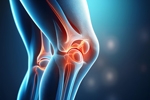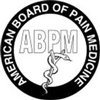
Knee pain is a common condition that can range from a mild annoyance to a debilitating issue. Understanding the causes and options for relief is essential for maintaining mobility and quality of life. Whether it's due to an acute injury, chronic wear-and-tear, or poor habits, the knee's complex structure makes it vulnerable to various problems.
Common Causes of Knee Pain
- Acute Injuries
- Ligament Tears: The anterior cruciate ligament (ACL) is particularly prone to injury during high-impact activities or sudden directional changes.
- Fractures: Trauma from falls or accidents can result in fractures in the bones of the knee joint.
- Meniscus Tears: Twisting motions often lead to tears in the meniscus, the cartilage that cushions your knee.
- Bursitis: Repetitive movements or prolonged pressure can inflame the bursae, small sacs of fluid that reduce friction in the knee.
- Chronic Conditions
- Osteoarthritis: The most common type of arthritis, it results from the gradual breakdown of cartilage.
- Rheumatoid Arthritis: An autoimmune condition that causes inflammation and pain in the knee joint.
- Gout: A form of arthritis caused by uric acid crystal buildup, often affecting the knees.
- Tendinitis: Overuse can lead to inflammation of the tendons, causing pain and stiffness.
- Poor Habits
- Wearing inappropriate footwear, such as high heels or unsupportive flat shoes, can misalign the knee and cause pain.
- A diet rich in inflammatory foods, like processed meats and sugary snacks, can worsen arthritis symptoms.
- High-impact exercises without proper warm-up routines may exacerbate knee issues.
Treatment Options for Knee Pain
Addressing knee pain often involves a combination of approaches tailored to the underlying cause:
- Medications
- Anti-inflammatory drugs can reduce swelling and alleviate pain.
- Corticosteroid injections offer temporary relief for more severe inflammation.
- Physical Therapy
- Strengthening exercises target the muscles around the knee, improving stability and reducing strain.
- Flexibility exercises can alleviate stiffness and enhance mobility.
- Advanced Interventions
- Platelet-Rich Plasma (PRP) therapy uses your body’s platelets to promote healing.
- Hyaluronic acid injections help lubricate the knee joint, easing movement and pain.
- Shockwave therapy stimulates tissue repair in chronic conditions like tendinitis.
- Lifestyle Modifications
- Switching to low-impact exercises, such as swimming or cycling, reduces strain on the knees.
- Investing in supportive footwear and maintaining a healthy weight can prevent further knee stress.
- Anti-inflammatory diets rich in fruits, vegetables, and omega-3 fatty acids help manage chronic conditions.
Conclusion
Knee pain can arise from a variety of causes, including acute injuries, chronic conditions, and poor lifestyle habits. By understanding the factors that contribute to knee discomfort, you can take proactive steps toward relief and prevention. From advanced medical interventions like PRP therapy to simple lifestyle changes such as wearing proper footwear or adopting a healthier diet, there are numerous options to manage and alleviate knee pain. If you're struggling with persistent knee pain, seeking professional care can set you on the path to improved mobility and quality of life. Don't let knee pain hold you back—solutions are available to help you regain your active lifestyle.
Precision Pain Care and Rehabilitation has two convenient locations in Richmond Hill – Queens, and New Hyde Park – Long Island. Call the Queens office at (718) 215-1888 or (516) 419-4480 for the Long Island office to arrange an appointment with our Interventional Pain Management Specialists, Dr. Jeffrey Chacko or Dr. Sonny Ahluwalia.
Note: This article is for informational purposes only and should not be considered medical advice. Consult a healthcare professional for personalized recommendations.













